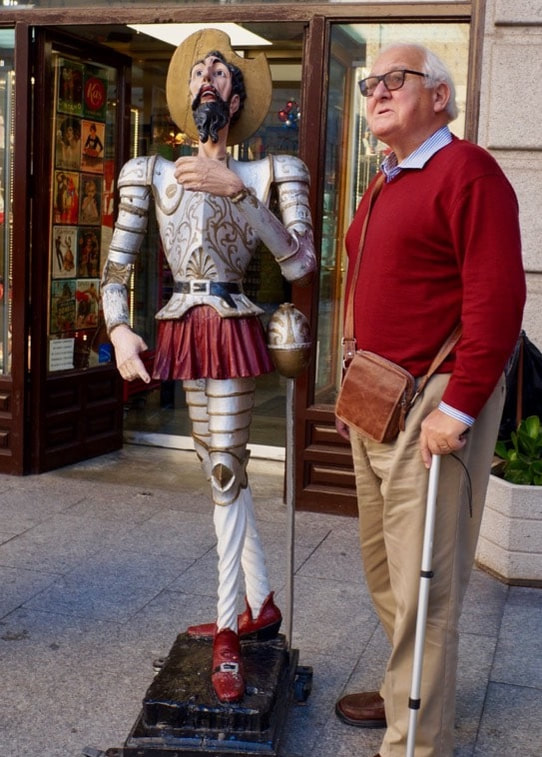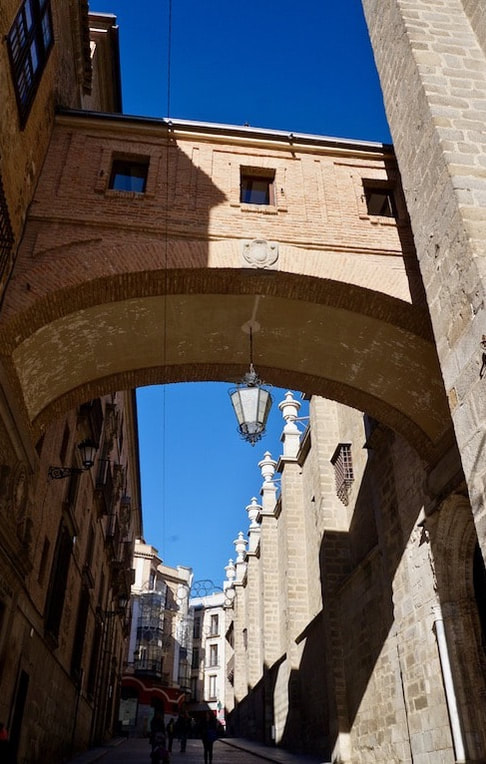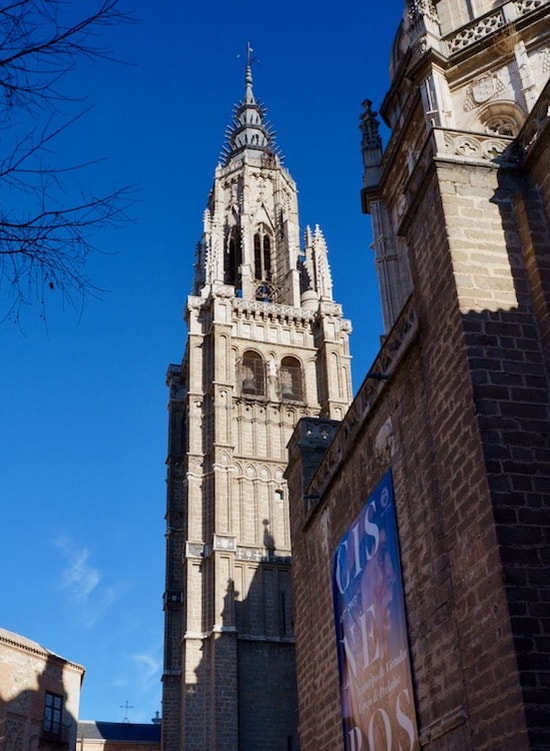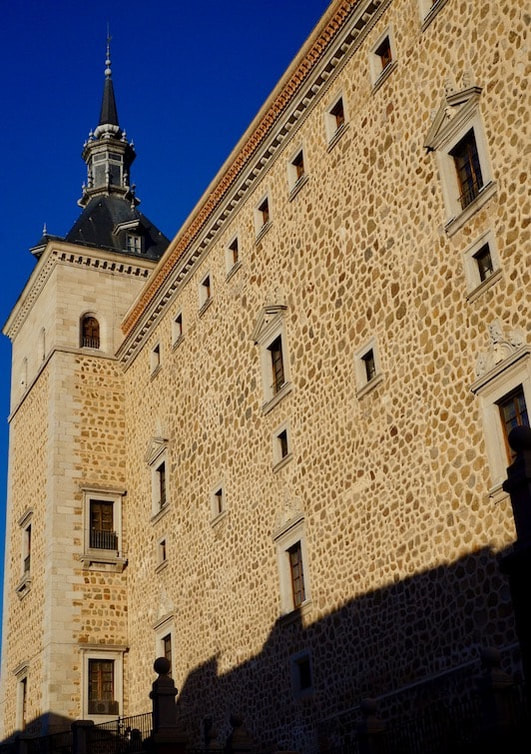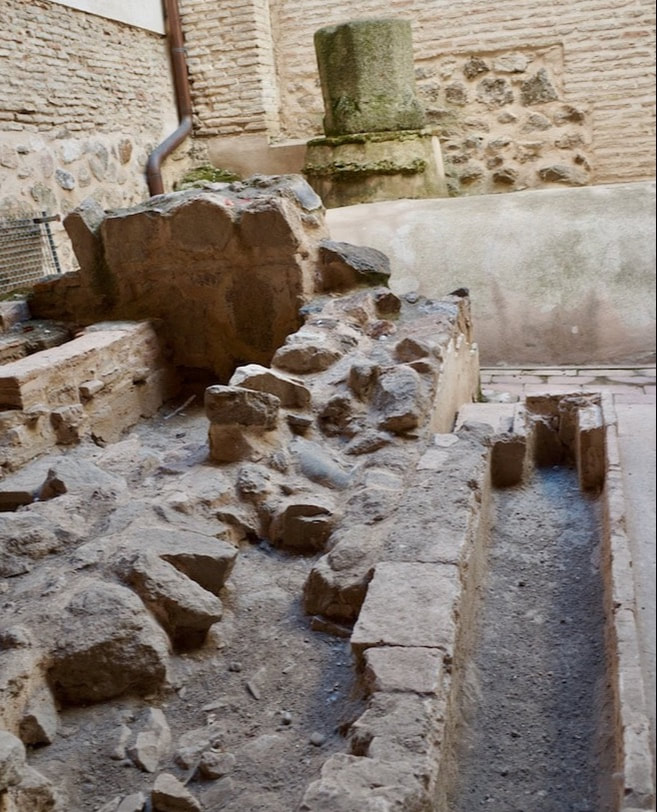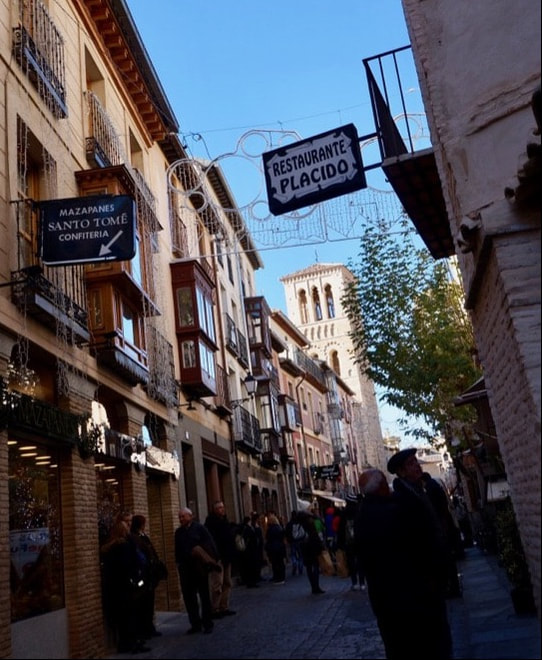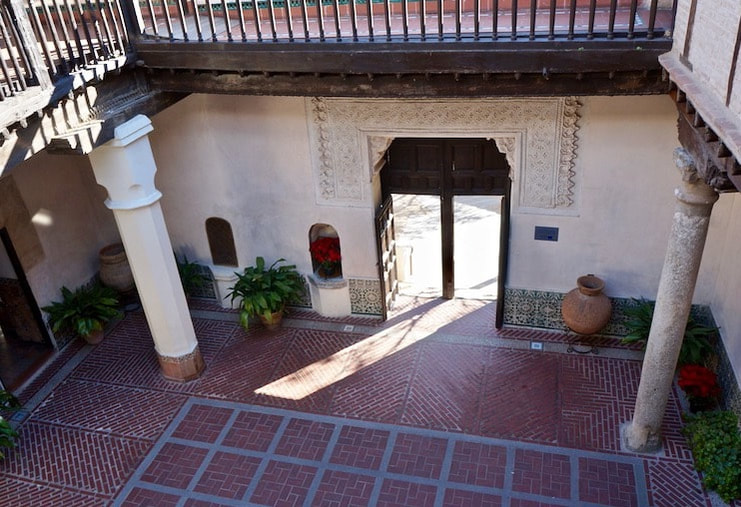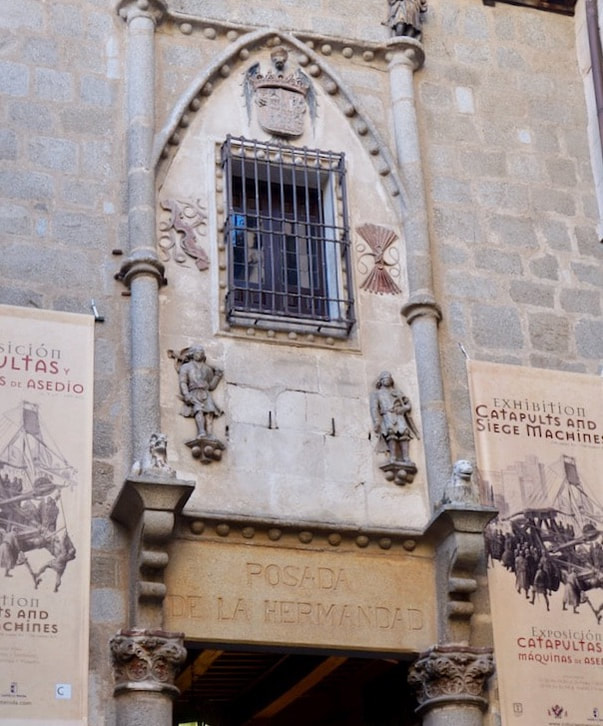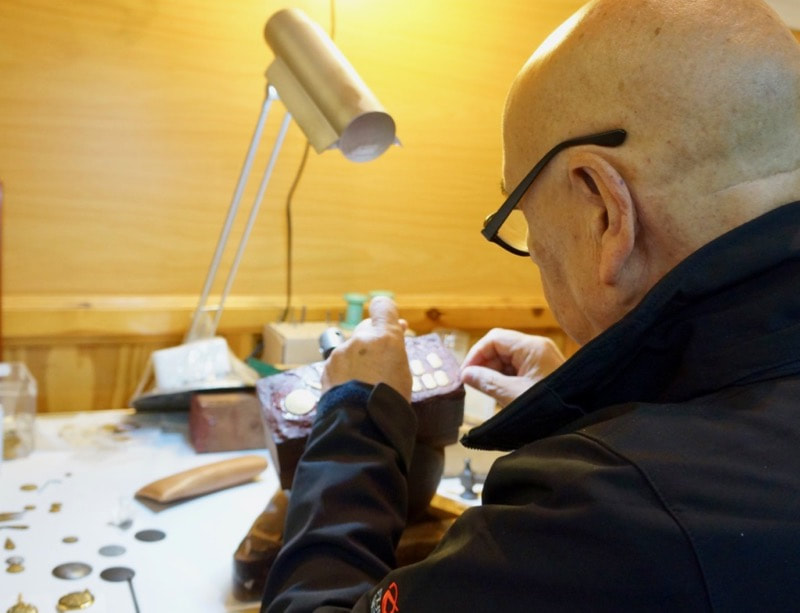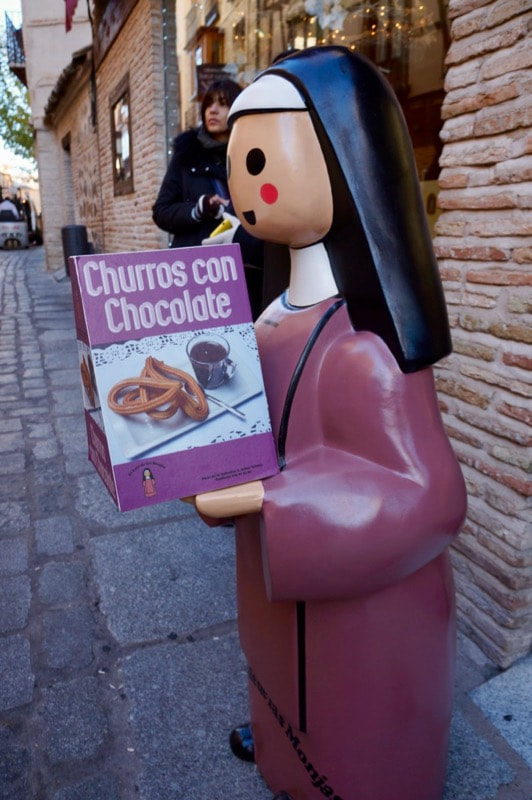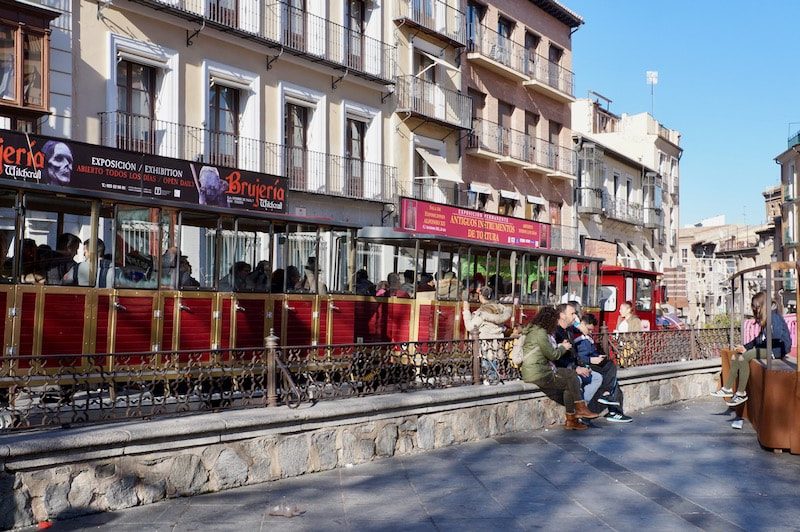10 Exciting Things to Explore in Toledo, Spain
In old Toledo, in the elevated Gothic heart of the city, you can see Don Quixote and Sancho Pancha strutting along the streets into the same buildings you look into today.
This Gothic center is what makes Toledo one of the most exciting places to visit in Spain. There are more than enough points of interest here that can engage you for several days.
This Gothic center is what makes Toledo one of the most exciting places to visit in Spain. There are more than enough points of interest here that can engage you for several days.
Toledo gives a sense of having been significant, but it never really was. It was a peripheral city. Perhaps, being peripheral and its massive walls and central hill protected it over the centuries. Because of this, today, there are remnants of almost every era which draw more visitors to this city, making it a requisite tourist destination in Spain.
As you walk in the streets, humming Man of La Mancha's The Impossible Dream, you really can feel part of the vast ribbon of Spanish history stretching over 2000 years and leaving its reminders at every street corner.
As you walk in the streets, humming Man of La Mancha's The Impossible Dream, you really can feel part of the vast ribbon of Spanish history stretching over 2000 years and leaving its reminders at every street corner.
10 Things to Explore in Toledo Spain
It is rather unfair to limit to 10 the points of interest in Toledo as there are so many things to do and explore in this city's winding, narrow streets, and squares. So, explore further when you come and visit.
It is rather unfair to limit to 10 the points of interest in Toledo as there are so many things to do and explore in this city's winding, narrow streets, and squares. So, explore further when you come and visit.
1. Casco Histórico de Toledo
This ancient city of Toledo was declared a UNESCO World Heritage site, so wherever you turn, there are many attractions to engage you. We're talking here not just of monuments but things the city does, its food, its traditional crafts, and its unique way of doing things.
The Gothic Centre (Casco Historico) around the Cathedral and the Alcazar has changed very little since the 13th century except for the shop owners at street level. The city gives a microcosm of Spanish history, from the Romans defeating the Celtic tribes to the Visigoths designing Christianity and on to the Berbers (Moors) bringing Islamic rule. The Christians, Jewish and Islamic communities have lived comfortably together, and the city has tried to keep whatever manifests this.
This ancient city of Toledo was declared a UNESCO World Heritage site, so wherever you turn, there are many attractions to engage you. We're talking here not just of monuments but things the city does, its food, its traditional crafts, and its unique way of doing things.
The Gothic Centre (Casco Historico) around the Cathedral and the Alcazar has changed very little since the 13th century except for the shop owners at street level. The city gives a microcosm of Spanish history, from the Romans defeating the Celtic tribes to the Visigoths designing Christianity and on to the Berbers (Moors) bringing Islamic rule. The Christians, Jewish and Islamic communities have lived comfortably together, and the city has tried to keep whatever manifests this.
2. Catedral Primada Santa María de Toledo
As the seat of the Metropolitan Archdiocese of Toledo, the Archbishop was there for a special ceremony. It was the last Sunday of Advent, so this High Gothic Cathedral was in its splendor.
It was in 1226, under the rule of Ferdinand III when the construction of this Cathedral started. However, there was already here an earlier Church consecrated in 587. It was the Episcopal Seat of the Visigoth Christian Church in Spain. Therefore, it occupied a significant ecclesiastical past. It was also here that Reccared I renounced Arianism in favor of Catholicism.
As the seat of the Metropolitan Archdiocese of Toledo, the Archbishop was there for a special ceremony. It was the last Sunday of Advent, so this High Gothic Cathedral was in its splendor.
It was in 1226, under the rule of Ferdinand III when the construction of this Cathedral started. However, there was already here an earlier Church consecrated in 587. It was the Episcopal Seat of the Visigoth Christian Church in Spain. Therefore, it occupied a significant ecclesiastical past. It was also here that Reccared I renounced Arianism in favor of Catholicism.
From the Visigoths, the Moors took over. This Cathedral became a Mosque until the city, without bloodshed, was taken over by Alfonso VI. The Muslims capitulated on the condition that their institutions of learning and worship would be respected.
However, at this time, Bernard of Cluny was the Bishop of Toledo. With the Queen, the Bishop took advantage of the King being away. At once, he sent an army to take over the mosque and immediately installed a temporary altar. The Muslims almost revolted, but the King, who was so angry, immediately ordered the active participants' punishment.
However, at this time, Bernard of Cluny was the Bishop of Toledo. With the Queen, the Bishop took advantage of the King being away. At once, he sent an army to take over the mosque and immediately installed a temporary altar. The Muslims almost revolted, but the King, who was so angry, immediately ordered the active participants' punishment.
But the story did not end there. The local Muslims themselves stopped this punishment of execution and, through their chief negotiator, Abu Walid, asked for the King's mercy and accepted the change. In gratitude, the people placed the likeness of Abu Walid on one of the pillars in the main Chapel.
Source: https://en.wikipedia.org/wiki/Toledo_Cathedral
This Cathedral is massive, 120 meters in length with five knaves and 88 richly decorated columns. Its works of art equal that of many museums with Goya, El Greco, and other renowned artists represented.
Just look up and admire the stained glass windows and the ribbed vaulting and, then, focus on the Choir with its decorations, and you've seen the grandest ever in all of Christendom.
Source: https://en.wikipedia.org/wiki/Toledo_Cathedral
This Cathedral is massive, 120 meters in length with five knaves and 88 richly decorated columns. Its works of art equal that of many museums with Goya, El Greco, and other renowned artists represented.
Just look up and admire the stained glass windows and the ribbed vaulting and, then, focus on the Choir with its decorations, and you've seen the grandest ever in all of Christendom.
3. The Alcazar
A Moorish fortress built on an earlier Christian one and even as far back as the Romans, the Alcazar now houses the Army Museum and offices.
A Moorish fortress built on an earlier Christian one and even as far back as the Romans, the Alcazar now houses the Army Museum and offices.
4. The Mezquita-Iglesia de El Salvador
Though a Catholic church today, this was originally a Mosque built facing Mecca at around the 9th century. Recent excavations even revealed earlier remains of the Visigoth and Roman periods. The pits keep exposing new layers of history and a better understanding of Roman engineering.
The Church has displayed well the various layers of excavations, and going there is like being part of an archaeological dig.
Though a Catholic church today, this was originally a Mosque built facing Mecca at around the 9th century. Recent excavations even revealed earlier remains of the Visigoth and Roman periods. The pits keep exposing new layers of history and a better understanding of Roman engineering.
The Church has displayed well the various layers of excavations, and going there is like being part of an archaeological dig.
5. Iglesia Santo Tome
This Church built in the 12th century over an 11th-century Mosque is right in the old historic center so you can see the street full of people even if it is the off tourist season.
The bell tower that you can see was originally the minaret of the Mosque. Inside, you can see one of El Greco's works, The Burial of the Count of Orgaz.
This Church built in the 12th century over an 11th-century Mosque is right in the old historic center so you can see the street full of people even if it is the off tourist season.
The bell tower that you can see was originally the minaret of the Mosque. Inside, you can see one of El Greco's works, The Burial of the Count of Orgaz.
6. El Greco Museum
El Greco was a painter and architect of the Spanish Renaissance, and though born in Crete, he moved to Toledo in 1577 and lived there till he died in 1614.
El Greco was frequently in trouble with the King and the Church, so he found it best to hide his candle in Toledo. Because of his training or troubled eyesight, his paintings were elongated and inconsistent with the Church's expectations.
El Greco was a painter and architect of the Spanish Renaissance, and though born in Crete, he moved to Toledo in 1577 and lived there till he died in 1614.
El Greco was frequently in trouble with the King and the Church, so he found it best to hide his candle in Toledo. Because of his training or troubled eyesight, his paintings were elongated and inconsistent with the Church's expectations.
The paintings in the Museum are not his best. Most of his paintings are either in the Churches who contracted him or in the Prado or other Museums. Still, the Apostles' collective work shows his style and the distinctiveness of the passion he brought to his representations.
The Museum by itself is worth a visit even without the paintings.
The Museum by itself is worth a visit even without the paintings.
7. Catapult and Siege Weapons Museum
Looking at the walls around the cities in Spain, it's impressive that anyone could defeat them and overcome the battlements.
There were four ways to do this.
-go over them, with substantial siege towers pushed up to the walls;
-go under them by tunneling;
-starving them out by cutting off food supplies but slow because cities often keep food; and finally, the Roman's favorite approach,
-go through them using catapults of different sizes to smash the walls apart.
The museum shows all these methodologies and is a real tribute to Roman engineering.
Looking at the walls around the cities in Spain, it's impressive that anyone could defeat them and overcome the battlements.
There were four ways to do this.
-go over them, with substantial siege towers pushed up to the walls;
-go under them by tunneling;
-starving them out by cutting off food supplies but slow because cities often keep food; and finally, the Roman's favorite approach,
-go through them using catapults of different sizes to smash the walls apart.
The museum shows all these methodologies and is a real tribute to Roman engineering.
8. Artisans At Work
Through the Middle Ages, Toledo was famous for its knives and swords, and they competed with Damascus for the reputation of the finest weaponry in the world.
Today, knives have become a primary tourist attraction, and models of every description are available.
Through the Middle Ages, Toledo was famous for its knives and swords, and they competed with Damascus for the reputation of the finest weaponry in the world.
Today, knives have become a primary tourist attraction, and models of every description are available.
9. Try some of Toledo's famous food
Named the Capital of Gastronomy in 2016, Toledo has unique dishes to offer, especially its partridge and lamb. What makes it unique is the use of spices from saffron to paprika and its locally grown purple garlic, aubergines, and olives.
You have to try the local cheese, Manchego, Marzipan sweets. We bought our Marzipan from the Nuns' store. The Manchego tastes so much better than what we get in North America.
Named the Capital of Gastronomy in 2016, Toledo has unique dishes to offer, especially its partridge and lamb. What makes it unique is the use of spices from saffron to paprika and its locally grown purple garlic, aubergines, and olives.
You have to try the local cheese, Manchego, Marzipan sweets. We bought our Marzipan from the Nuns' store. The Manchego tastes so much better than what we get in North America.
10. Enjoy A Ride Around the City
Take this fun ride around the city, and I assure you, you'll be smiling all the way.
Take this fun ride around the city, and I assure you, you'll be smiling all the way.
How to Go to Toledo
Here's Toledo on the map. It is so close to Madrid that once you are in Spain's capital city, there are several day trips to Toledo. You can take one of these or go to the Madrid train station and get a ticket to Toledo.
We drove from Porto to here, and it took us over 5 hours. It was an easy drive, and as long as you have your GPS, you can easily find your hotel.
Here's Toledo on the map. It is so close to Madrid that once you are in Spain's capital city, there are several day trips to Toledo. You can take one of these or go to the Madrid train station and get a ticket to Toledo.
We drove from Porto to here, and it took us over 5 hours. It was an easy drive, and as long as you have your GPS, you can easily find your hotel.
Toledo, Spain Map
Read More on Spain:
